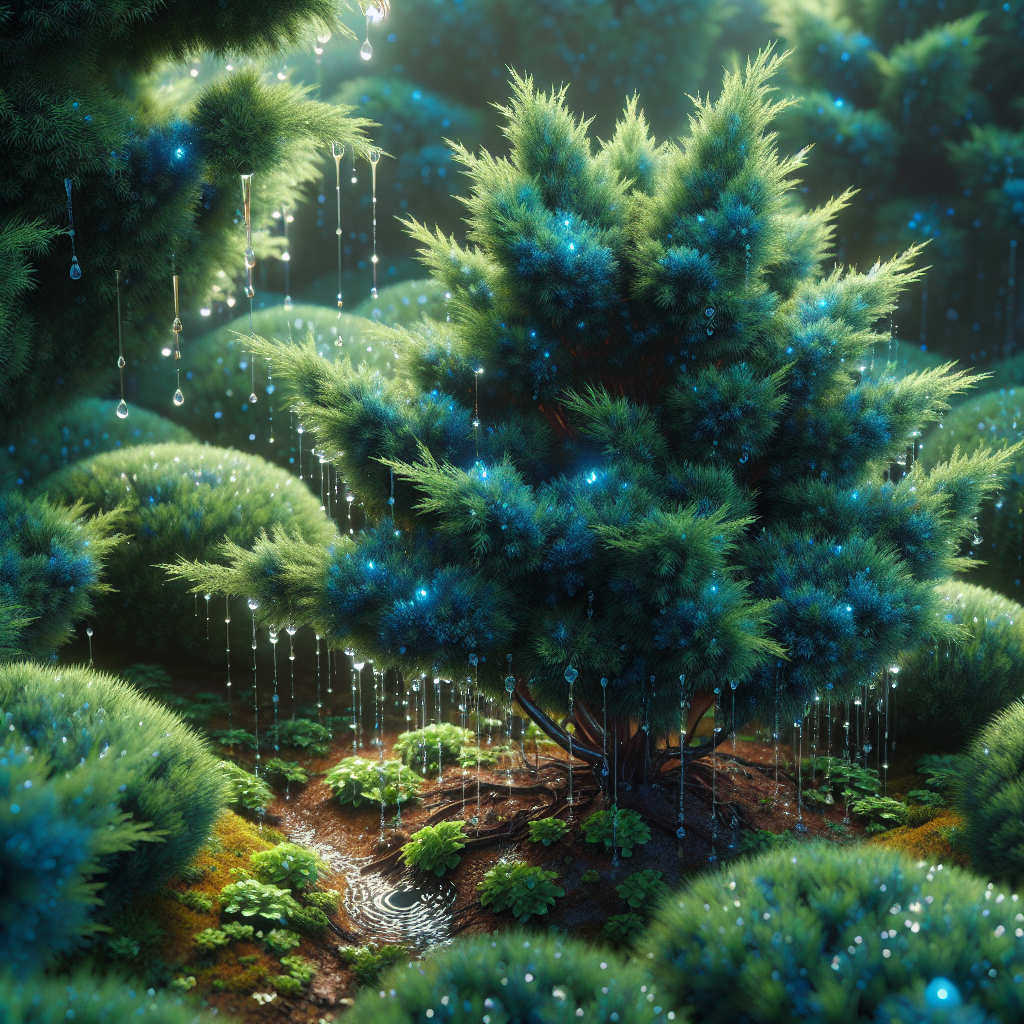Blue Point Junipers are a popular choice for landscapers and gardeners looking to add a touch of elegance and beauty to their outdoor spaces. These stunning evergreen shrubs are known for their striking blue-green foliage and their ability to thrive in a variety of conditions. One particular method that has been gaining attention in recent years is the use of controlled, slow drip irrigation for Blue Point Junipers. By providing these plants with a steady, consistent supply of water, gardeners are finding that they can encourage healthier growth and more vibrant coloration in their Blue Point Junipers.
In this article, we will explore how Blue Point Junipers benefit from controlled, slow drip conditions and why this method is becoming increasingly popular among gardeners. We will delve into the specific needs of Blue Point Junipers when it comes to watering, as well as the advantages of using slow drip irrigation to meet those needs. By the end of this article, you will have a better understanding of how to care for your Blue Point Junipers and help them thrive under controlled, slow drip conditions.
**The Benefits of Controlled Irrigation for Blue Point Junipers**
One of the key advantages of using controlled, slow drip irrigation for Blue Point Junipers is that it allows for more precise control over the amount of water that the plants receive. When using traditional watering methods such as sprinklers or hand watering, it can be easy to accidentally overwater or underwater your plants. This can lead to issues such as root rot, nutrient deficiencies, and poor overall health in your Blue Point Junipers.
By contrast, slow drip irrigation delivers water directly to the root zone of the plants at a slow and steady rate. This helps to prevent runoff and evaporation while ensuring that each plant receives just the right amount of water it needs to thrive. Additionally, slow drip irrigation can help promote deeper root growth in Blue Point Junipers as the roots are encouraged to reach down towards the moisture source.
Another benefit of using controlled irrigation for Blue Point Junipers is that it helps reduce water waste. Traditional watering methods can often result in water being sprayed onto non-target areas such as sidewalks or driveways, leading to unnecessary water loss through runoff and evaporation. Slow drip irrigation minimizes this waste by delivering water directly to where it is needed most – at the root zone of the plants.
Overall, by providing your Blue Point Junipers with controlled, slow drip irrigation, you can help ensure that they receive optimal moisture levels while minimizing water waste and promoting healthier growth.
**Meeting the Watering Needs of Blue Point Junipers**
Blue Point Junipers have specific watering needs that must be met in order for them to thrive. These plants prefer well-draining soil that allows excess water to escape easily so that their roots do not become waterlogged. At the same time, they require consistent moisture levels throughout their growing season – typically spring through fall – in order to stay healthy and vibrant.
When using controlled, slow drip irrigation for Blue Point Junipers, it is important to take into account factors such as soil type, temperature, and humidity levels when determining how often and how long to water your plants. In general, Blue Point Junipers should be watered deeply but infrequently – allowing the soil around them to dry out slightly between watering sessions.
During periods of intense heat or drought stress, you may need to adjust your watering schedule accordingly by increasing frequency or duration as needed. It is also important not to overwater your Blue Point Junipers as this can lead to issues such as root rot and poor growth.
By monitoring soil moisture levels regularly and adjusting your watering schedule based on weather conditions and plant needs, you can help ensure that your Blue Point Junipers receive just the right amount of water they need to thrive under controlled conditions.
**FAQs about Slow Drip Irrigation for Blue Point Junipers**
1) How often should I water my Blue Point Junipers using slow drip irrigation?
-Blue point juniper trees should be watered deeply but infrequently with controlled drip systems.
2) What type of soil do Blue point juniper trees prefer?
-Blue point juniper trees prefer well-draining soils.
3) Can I overwater my blue point juniper trees with slow-drip irrigation?
-Yes it’s possible if not monitored properly.
4) How does slow-drip irrigation minimize wastage?
-Slow-drip systems deliver targeted amounts directly where needed.
5) What are some benefits from using slow-drip systems on blue point juniper trees?
-Precise control over watering amounts; reduced risk factors like root rot; deeper root growth; minimized wastage.













